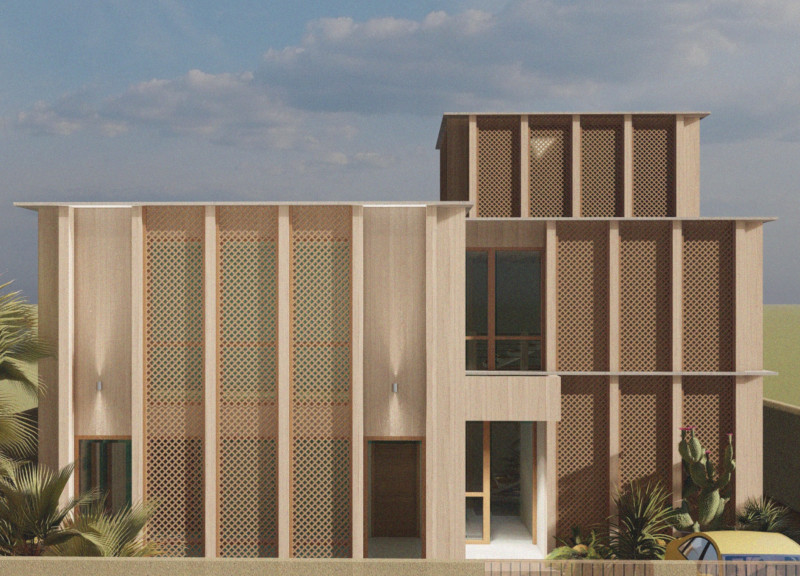5 key facts about this project
This architectural project is designed primarily for communal use, making it a focal point for social interaction and engagement. The programming encompasses a variety of functions, ensuring that it can serve as a versatile space for meetings, events, and gatherings. Thus, the layout is carefully considered, enabling smooth circulation throughout the building while promoting connectivity between different areas. This approach supports an inclusive atmosphere, encouraging collaboration and fostering community ties.
Distinctive in its approach, the project relies heavily on a diverse array of materials that are both aesthetically pleasing and functionally robust. Concrete features prominently as the main structural element, providing an enduring backbone to the design. The careful selection of glass for the façade allows natural light to permeate the interior spaces, creating a welcoming environment that blurs the line between indoor and outdoor settings. This design choice not only enhances the visual appeal of the building but also reduces the dependency on artificial lighting, underlining the project's commitment to energy efficiency.
In addition to concrete and glass, the project incorporates elements of wood, which is used in the interior finishes, adding warmth and texture to the spaces. This material choice connects the building to its natural surroundings, echoing the timber found in nearby landscapes. The inclusion of stone, precisely selected to match the local geology, reinforces the building's connection to the site, rooting it in the area’s cultural and geological narrative.
An innovative aspect of this project lies in its sustainability strategies. The architectural design integrates passive heating and cooling techniques, optimizing energy use throughout the seasons. Green roofs and rainwater harvesting systems exemplify an environmentally conscious approach, reducing runoff and promoting biodiversity. The building's orientation maximizes sunlight exposure, while overhangs strategically control solar gain, showcasing a mature understanding of climatic responsiveness.
Special attention has been given to the landscaping surrounding the building, which is not merely an afterthought but a crucial component of the overall design. Native plant species are utilized to promote biodiversity and minimize water usage, creating a seamless transition from the architecture to the landscape. This integration emphasizes ecological sustainability while also providing an attractive setting for users.
The unique nuances of this project reflect a contemporary understanding of architectural design, where functionality meets aesthetics, and where user experience is paramount. The thoughtful transition of spaces, from open areas for community interaction to more intimate rooms for reflection, showcases the careful consideration of human scale within the design.
By focusing on practical architectural ideas and embracing flexible design strategies, the project serves as a vital resource for the community while offering an exemplary model of modern architecture. Each layer of the building—from its material choices to its spatial organization—speaks to an overarching philosophy of connection, sustainability, and respect for the natural environment.
Readers are encouraged to explore the architectural plans, sections, and designs of this project to gain deeper insights into the innovative approaches and thoughtful execution behind it. The architectural components reveal the careful deliberation that has shaped this design, inviting further discussion and appreciation of architecture that speaks to both place and purpose.


 Aditya Mazumdar,
Aditya Mazumdar,  Binita N Tamboli
Binita N Tamboli 























